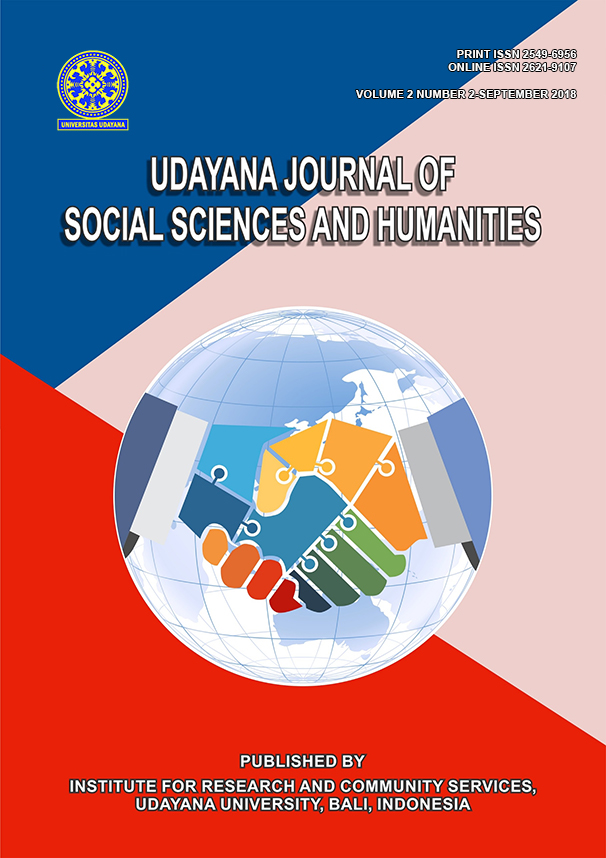Determining Problems in Bilingual Public Information Signs
Abstract
This article aims in describing the bilingual public signs regarding to the product of two languages and the lexical choices. Bilingual public signs can be easily found in Bali for the reason of giving information to everybody. It is not only the Balinese or Indonesian people who can access the information, but also foreign people. Especially in relation to Bali as tourist destination, the bilingual public signs have great role in providing information. The data was taken from the bilingual public signs in Denpasar and Badung. Both are recognized as the capital city of Bali and the main tourist destination in Bali. Method of collecting data applied documentation and method of analyzing data was descriptive qualitative. It was described based on descriptive way qualitatively regarding to the theory of translation. The results show that two important things must be considered in bilingual public signs. First, the modes of literal and adaptation only result in problem of understanding the sign in TL. While in SL, the sign determines clear meaning. It comes from the structure of SL that is directly transferred to the structure of TL. Second, lexical choices also lead to new problem of interpretation. Correct lexical choices reflect naturalness of language based on the culture of foreign readers. They can find the meaning naturally. However, incorrect lexical choices only show confusion in understanding the meaning.






